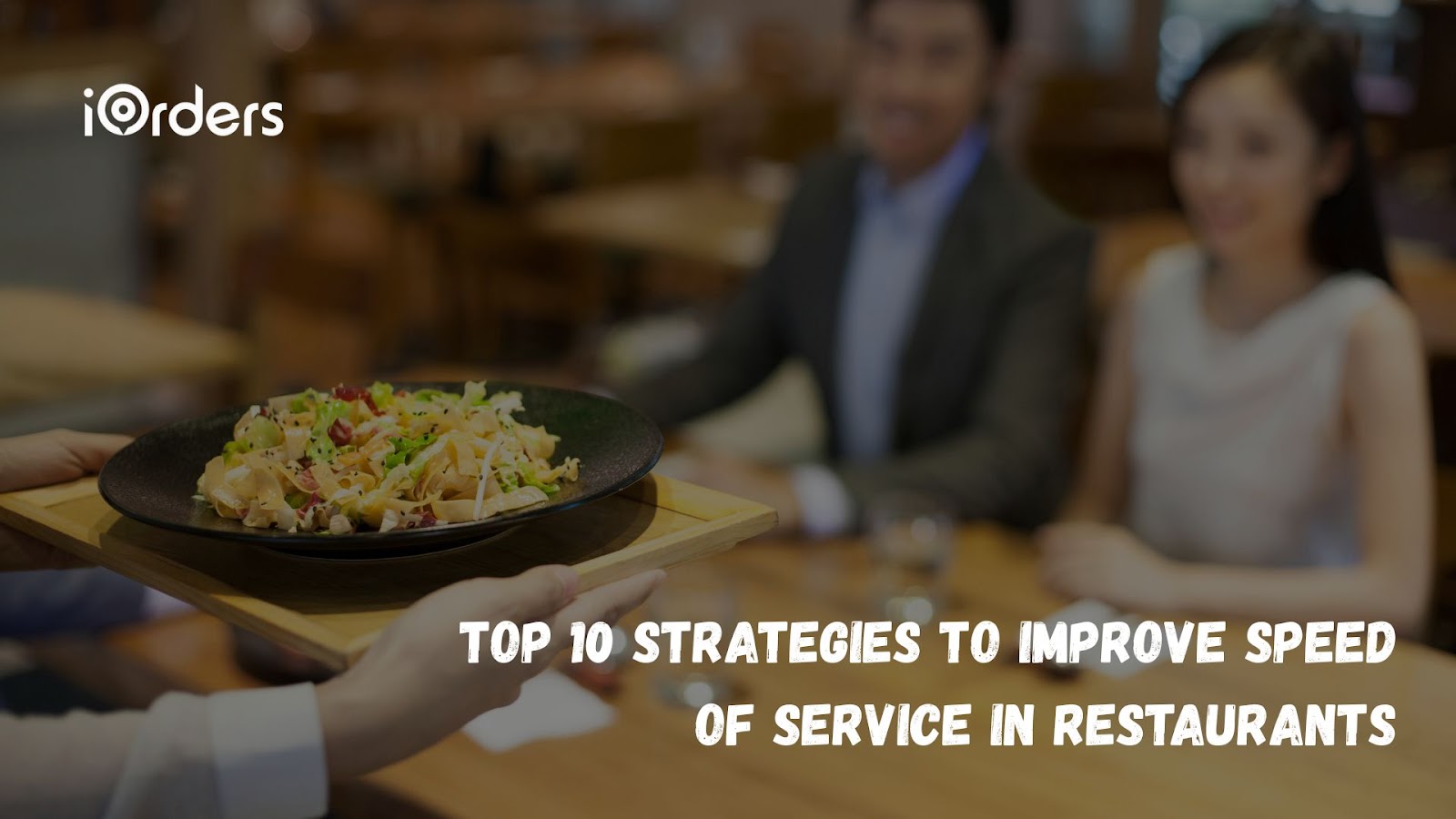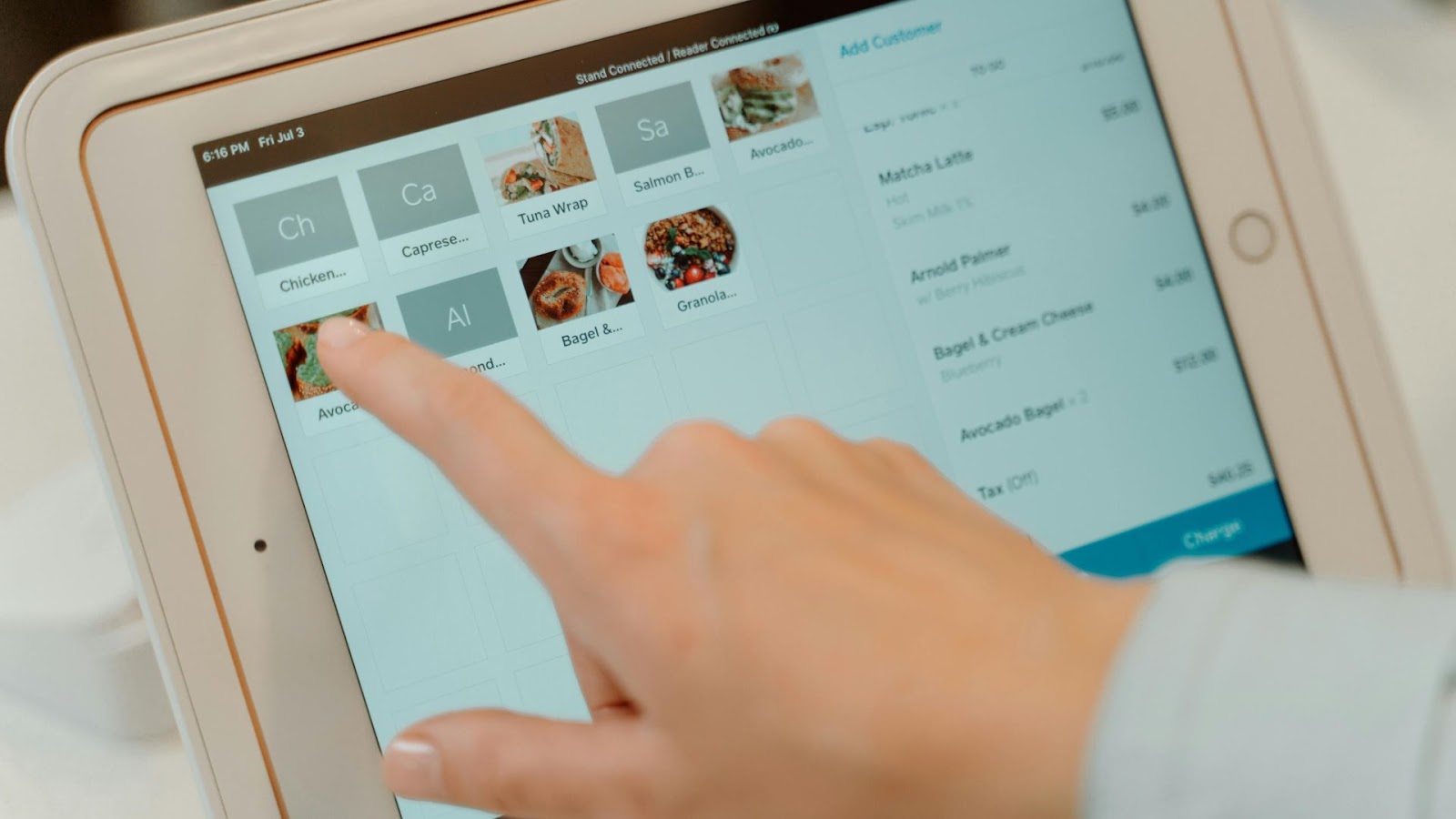July 25, 2025

Have you noticed how even a short delay can make guests impatient?
In restaurants, speed of service is not just about fast food delivery. It directly affects your revenue, table turnover, and repeat business. In fact, 61% of Canadian diners say healthier options at quick service impact their decision to return. Long waits frustrate guests, reduce order sizes, and lower tips for staff.
People demand efficiency and quality. Regardless of your restaurant type, fast service drives loyalty. Faster table turns serve more guests per shift, increasing daily sales. With rising costs and competition, saving extra minutes per order means higher profits with no extra investment.
In this guide, you will learn proven strategies to improve service speed, reduce challenges, and keep customers happy.

Fast service is no longer a bonus. It is a basic expectation for diners today. Slow service affects your reputation, tips, and daily sales. Here is why speed matters so much now:
Also Read: How To Improve Restaurant Customer Service Experience
Speed shapes your profit, staff morale, and brand image. But what exactly affects your service speed each day? Let’s find out.

Various things slow down your restaurant service without you noticing. Fixing them improves speed and guest satisfaction. Here are the top factors that impact how fast you serve:
Also Read: Innovative Types of Restaurant Technology Trends for 2025
Understanding these factors is the first step. Now, let’s get into practical strategies to improve your speed of service.

Improving your restaurant’s speed of service is not guesswork. You need clear, practical actions that boost efficiency and guest satisfaction. These 10 strategies will help you deliver faster without sacrificing quality.
Here’s how you can start making real changes:
A large menu slows your kitchen down. Focus on high-margin, easy-to-prep dishes. Remove low sellers and overly complex items. For example, instead of offering 10 types of pasta, keep 3 that use similar base sauces. It speeds up cooking and ensures consistency. Guests appreciate faster, reliable service.
Your kitchen layout affects prep time. Use assembly-line setups for popular dishes. Keep tools and ingredients within easy reach at each station. Place salad items near the cold prep and grill items by the grill. Less movement means faster plating and fewer errors.
Also Read: Low-Budget Small Restaurant Design Ideas for 2025
Train your team to move efficiently without losing accuracy. Cross-train staff to handle multiple tasks during rush hours. Practice time-bound tasks like plating or clearing tables within a set time. It builds confidence and reduces delays in service, from order taking to dish delivery.
Prepare sauces, dressings, and garnishes before service. Batch-cook items like rice or pasta for peak times. It reduces cooking time for each order. For example, pre-cooked pasta only needs heating before serving. Such small steps keep orders flowing fast during busy hours.
Use POS-integrated kitchen display systems to avoid handwritten ticket errors. Install QR ordering for dine-in to speed up order placement. Automation reduces human error, helps staff prioritize orders efficiently, and keeps the kitchen organized under peak pressure.
With iOrders’ Website and QR Ordering, receive direct orders anytime, anywhere. Guests can visit your website or scan a QR code to order directly for dine-in, pickup, or delivery. This makes ordering faster for them and operations smoother for you.
Analyze past sales data to identify peak times. Schedule enough staff to handle rushes without burnout. For example, if Fridays are busiest, add extra cooks or servers during lunch and dinner. Well-planned shifts improve guest wait times and keep morale high.
Equip servers with handheld ordering devices. It sends orders directly to the kitchen, cutting wait time. Use QR pay-at-table options so guests can pay quickly without waiting for checks. Faster ordering and payment turn tables faster and improve your revenue per hour.
Also Read: Automatic Menu Ordering System for Hotels and Restaurants
Track ticket times to see how long orders take from start to finish. Set goals to reduce prep times by small margins weekly. Share results with staff to motivate improvements. Data-based targets ensure accountability and drive continuous speed improvements.
Fast delivery keeps online customers happy. Choose platforms known for quick dispatch and real-time tracking. Alternatively, manage your own delivery for better control. Happy delivery customers often become repeat dine-in guests, further growing your revenue.
With iOrders’ Delivery-as-a-Service, offer commission-free delivery without the cost of maintaining your own fleet. Delight guests with direct delivery while keeping more profit in your business.
Ask guests about wait times and service speed. Use short surveys, table touches, or online reviews to spot bottlenecks. For example, if many complain about slow payments, switch to QR payments. Real guest feedback pinpoints what truly needs fixing.
With iOrders’ Smart AI-powered Review System, translate guest sentiments into actionable insights. Know exactly how your guests feel, what affected their experience, and how to improve it. Smoothly read, analyze, and reply to reviews across all platforms from one dashboard.
Applying these strategies sets your restaurant apart in a busy market. Next, discuss some common mistakes that silently slow down your service and cost you customers daily.

Fast service is not about rushing. It's about removing delays that frustrate guests. Many restaurants make mistakes that silently slow everything down. Recognizing them helps you act before reviews or sales drop.
Here are 5 mistakes you should avoid:
Also Read: How to Start a Self-Service Restaurant in 2025?
Small mistakes accumulate into long wait times. Next, learn how iOrders helps you offer faster, smarter service and keeps your guests coming back.

Speed of service is what keeps guests coming back. iOrders is a platform built for small and medium-sized restaurants that want to grow online without relying on costly third-party apps. It gives you full control over ordering, guest interactions, and branding while improving your daily operations.
iOrders helps you manage direct orders, engage with guests effectively, and drive higher profits with smarter tools.
Here’s how iOrders supports you in reducing delays and improving every step:
Speed of service depends on smart operations and the right technology. With iOrders, everything comes together for you.
Still want to know more? Contact iOrders today and start booking profits today.
Fast service isn’t just about quick food on the table. It shapes how guests remember you, how often they return, and how much they spend. Challenges like menu complexity, poor staff training, and outdated ordering systems often slow you down and hurt your profits.
You can solve these by adopting clear strategies. Simplifying your menu reduces prep times without hurting variety. Redesigning your kitchen workflow helps staff move faster with fewer errors. Investing in technology like QR ordering speeds up orders and payments. Training your team for speed and accuracy keeps service consistent even during rush hours.
Each step you take improves your restaurant’s reputation for efficiency and care. But you need the right tools to tie these efforts together.
Want to improve your speed of service and guest satisfaction without paying high commissions? Book a free demo with iOrders today to see how it can help you serve faster, grow revenue, and build loyal guests.
1. What is a good average speed of service for a restaurant?
A good dine-in speed is 20-30 minutes from order to table. For quick-service, under 10 minutes is ideal. Faster service increases table turnover and guest satisfaction. However, ensure speed does not affect food quality or accuracy, as both are equally important for repeat business.
2. How does menu design affect the speed of service?
Complex menus slow down prep and confuse staff. A focused menu with fewer, high-margin items reduces prep time, improves kitchen efficiency, and ensures faster orders. It also helps inventory management, as fewer ingredients are needed, lowering waste and operational delays during peak hours.
3. What technology improves the speed of service the most?
QR ordering and POS-integrated kitchen display systems improve speed the most. QR ordering reduces wait times for ordering and payments. Kitchen displays remove ticket errors and help staff prioritize orders efficiently, keeping the workflow smooth even during rush hours and reducing guest wait times.
4. How does staff training impact service speed?
Well-trained staff move faster, make fewer mistakes, and handle orders confidently. Cross-training ensures coverage during busy times. Training on POS use, menu details, and time-bound tasks improves speed and accuracy, leading to happier guests and a smoother shift for the entire restaurant team.
5. How can small restaurants improve speed without large investments?
Small restaurants can improve speed by optimizing menu design, rearranging kitchen layouts for better workflow, cross-training staff, and using QR codes for ordering and payment. These require minimal investment but greatly reduce wait times, increase order accuracy, and improve guest satisfaction efficiently.